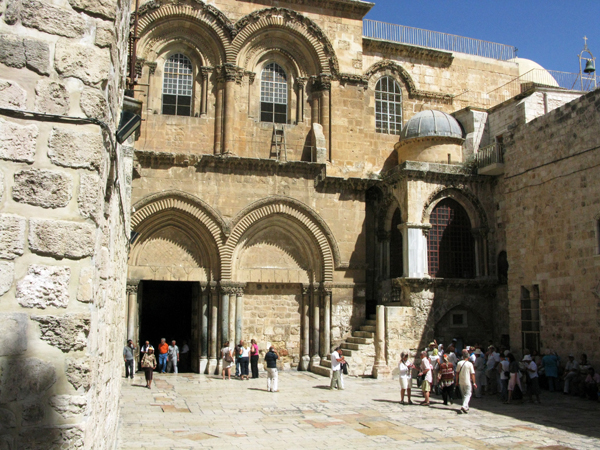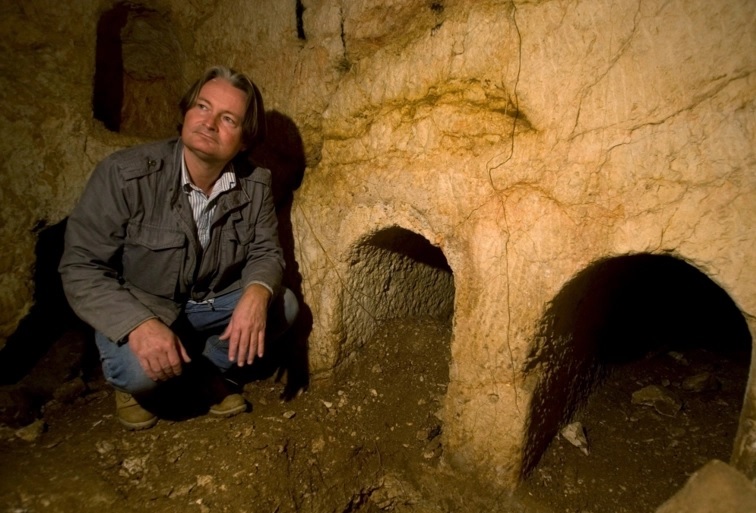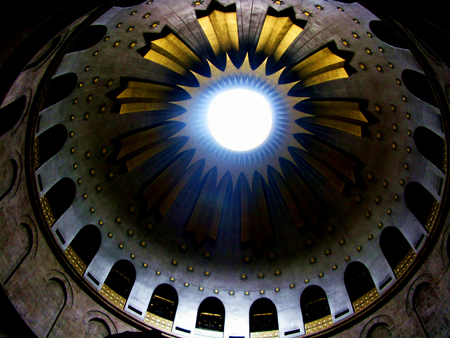
The church built over what early traditions held was the hill known as Golgotha and the tomb where Jesus was buried.
☰ See Where

In Jesus' time the site was a disused quarry recycled as a burial ground and lie outside the city wall. The site was brought within the city walls in 41-43 AD and filled over by order of Hadrian to create a level plaza for the Capitoline temple. When Constantine came to power, the temple was torn down and the first church on the site was dedicated in 335; Eusebius, who was a witness to the building of the church, tells us, ". . . as layer after layer of the subsoil came into view, the venerable and most holy memorial of the Saviour's resurrection, beyond all our hopes, came into view."
The original church—believed by archaeologists to be far larger than the present building—was known as the Martyrion and was dedicated on 17 September 335. Over the years it had suffered the ravages of fire, earthquakes, war, and poor maintainance.

Two other tombs in the vicinity of the 'Tomb of Christ' in the Holy Sepulchre
Today the Church is shared by six different jealously contentious Christian congregations: Armenian Orthodox, Copts, Ethiopians, Greek Orthodox, Roman Catholic and the Syrian Orthodox. It is the great shame to the Church that, at this very place where our Saviour died to reconcile us to God and to one another, fights break out every year during the festive seasons due to perceived incursion into one or the other of the occupants' "territory." Every photograph of the building from the main entrance (see photo above) shows a little ladder perched on a ledge below the right window for the simple reason that no one knows who first put it there, and no one wanted to start a minor war removing it. So jealously have these groups contested are every inch of their 'territory' it irked the Ottoman authorities so badly they confiscated the key to the Church from them and gave them over to two Muslim families for safe keeping. Every morning and evening one representative from each families would come with the key to open and close it up. Little wonder why evangelical Christians choose to remember the death and burial of Jesus in the decidedly more serene surroundings of the "Garden Tomb" situated north and outside the Old City even though the place has little historical claim to authenticity.

Resources: For a beautifully illustrated presentation of how Golgotha and the grave of Jesus evolved into the present church, see National Geographic, Dec 2017, pp.51-7.

©ALBERITH
230616lch